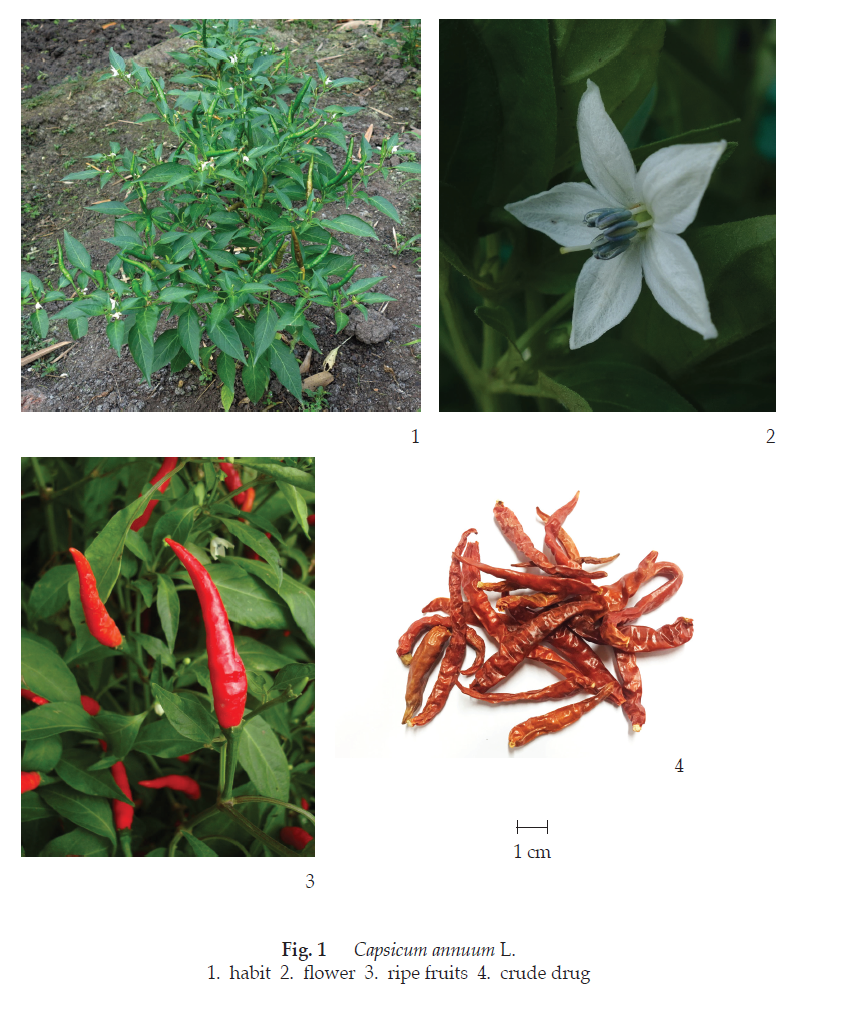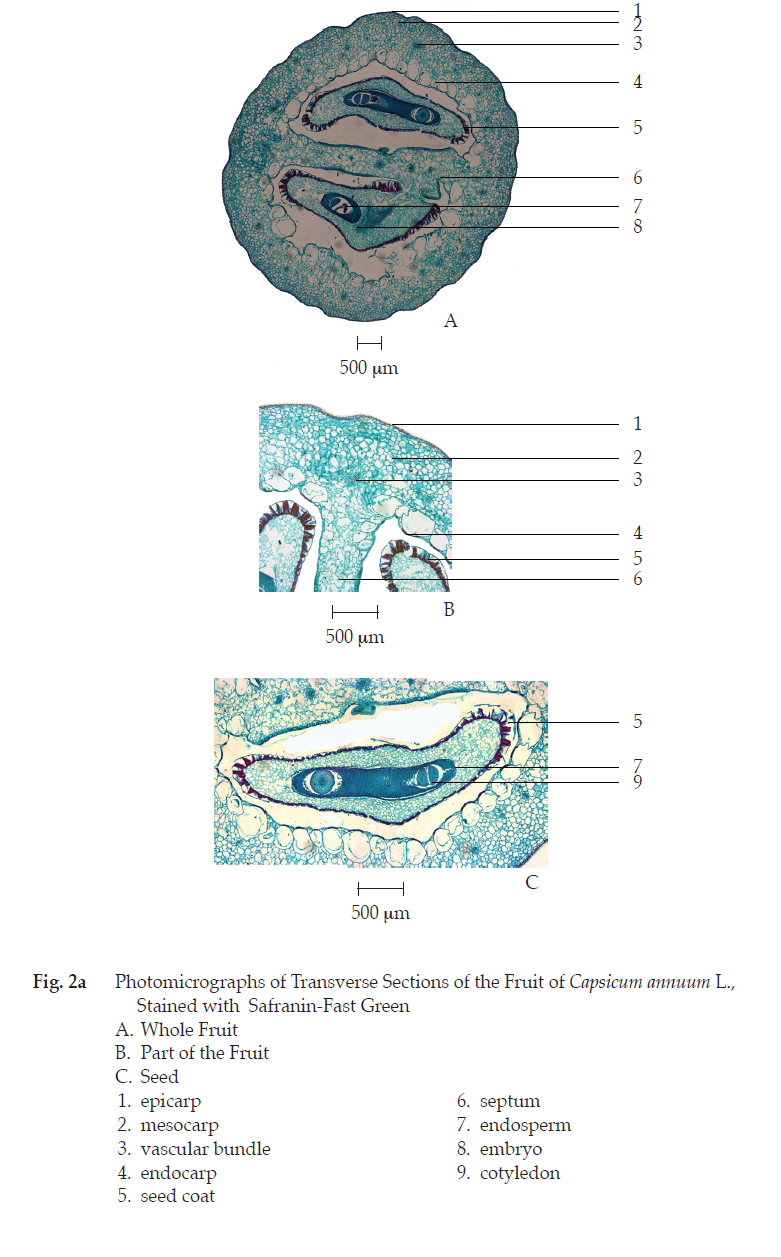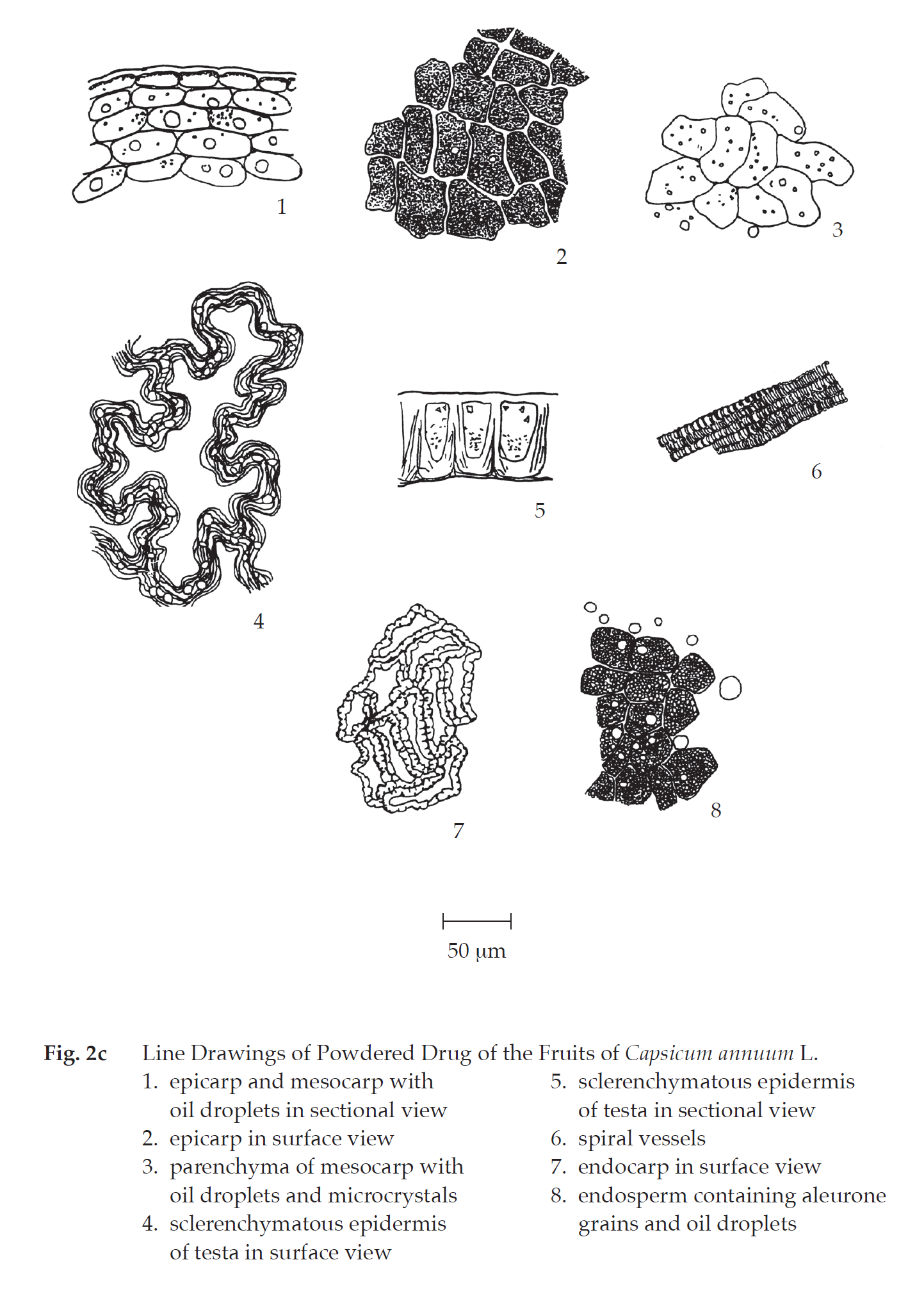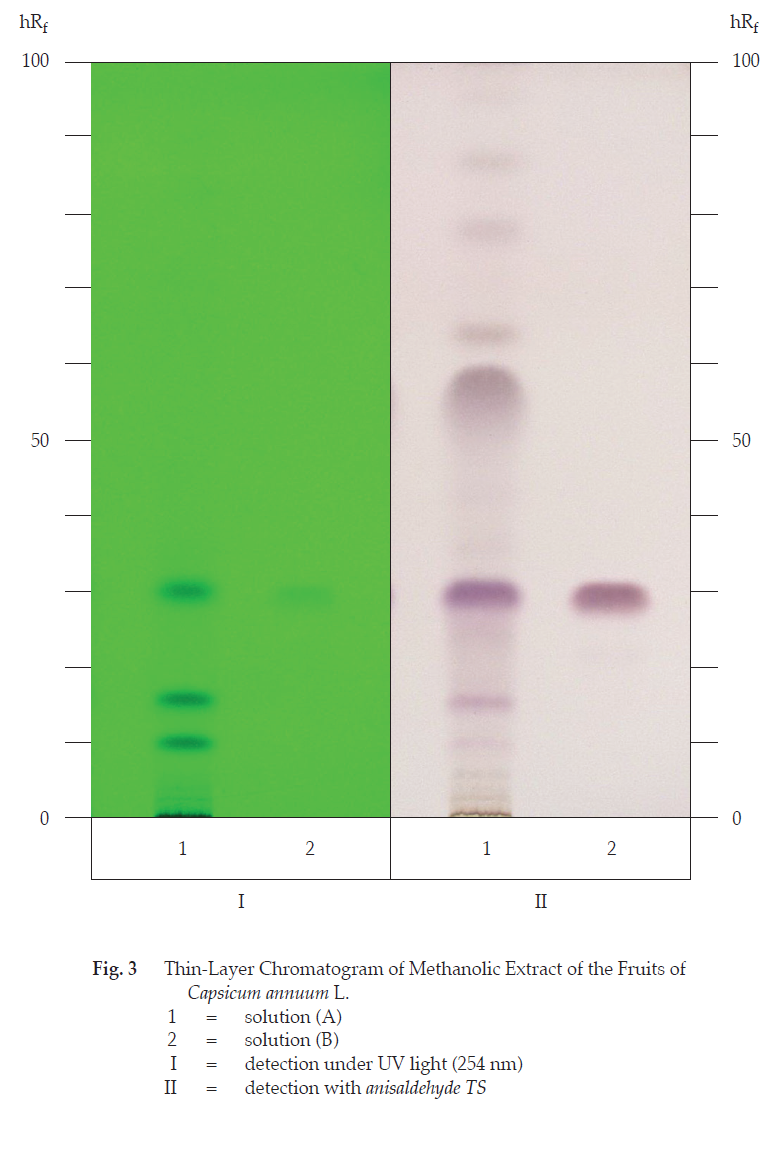ตำรามาตรฐานยาสมุนไพรไทย
Thai Herbal Pharmacopoeia
สำนักยาและวัตถุเสพติด กรมวิทยาศาสตร์การแพทย์ กระทรวงสาธารณสุข
Bureau of Drug and Narcotic, Department of Medical Sciences, Ministry of Public Health(Tinospora crispa (L.) Hook.f. & Thomson)
(Nelumbo nucifera Gaertn.)
(Centella asiatica (L.) Urb.)
(Centella Dry Extract)
(Centella Cream)
(Mesua ferrea L.)
(Piper sarmentosum Roxb.)
(Piper sarmentosum Roxb.)
(Pterocarpus santalinus L. f.)
(Santalum album L.)
(Senna tora (L.) Roxb.)
(Senna alata (L.) Roxb.)
(Senna Alata Tea)
(Piper retrofractum Vahl)
(Myristica fragrans Houtt)
(Andrographis paniculata (Burm. f.) Nees)
(Andrographis Capsules)
(Allium ascalonicum L.)
(Ocimum tenuiflorum L.)
(Curcuma longa L.)
(Turmeric Capsules)
(Turmeric Dry Extract)
(Turmeric Dry Extract Capsules)
(Arcangelisia flava (L.) Merr.)
(Curcuma sp.)
Harrisonia perforata (Blanco) Merr.
(Aristolochia pierrei Lecomte)
(Zingiber officinale Roscoe)
(Ginger Capsules)
(Ginger Tea)
(Cassia fistula L.)
(Nardostachys jatamansi (D. Don) DC.)
(Angelica sinensis (Oliv.) Diels)
Artemisia annua L.
(Ligusticum sinense Oliv. cv. Chuanxiong)
(Neopicrorhiza scrophulariiflora Pennell)
(Atractylodes lancea (Thunb.) DC.)
(Aucklandia lappa Decne)
(Terminalia chebula Retz.)
(Angelica dahurica (Hoffm.) Benth. & Hook. f. ex Franch. & Sav. var. dahurica)
(Kaempferia parviflora Wall. ex Baker)
(Hibiscus sabdariffa L.)
(Roselle Tea)
(Allium sativum L.)
(Zingiber zerumbet (L.) Sm.)
(Wurfbainia testacea (Ridl.) Škorničk.& A. D. Poulsen)
(Cannabis sativa L.)
(Myristica fragrans Houtt)
(Dracaena cochinchinensis (Lour.) S. C. Chen)
(Ficus racemosa L.)
(Hyptis suaveolens (L.) Poit.)
Clerodendrum indicum (L.) Kuntze
(Phyllanthus emblica L.)
(Citrus hystrix DC.)
(Citrus hystrix DC.)
(Areca catechu L.)
(Momordica charantia L.)
Moringa oleifera Lam.
(Aegle marmelos (L.) Corrêa)
(Solanum trilobatum L.)
(Morus alba L.)
Gynostemma pentaphyllum(Thunb.)
Makino
(Clinacanthus nutans (Burm. f.) Lindau)
(Cissus quadrangularis L.)
(Mimusops elengi L.)
(Zingiber montanum (J. König) Link. ex A. Dietr.)
(Piper betle L.)
(Capsicum annuum L.)
(Capsicum Oleoresin)
(Capsicum Gel)
(Piper nigrum L.)
(Piper nigrum L.)
(Eurycoma longifolia Jack)
(Thunbergia laurifolia Lindl.)
(Piper wallichii (Miq.) Hand.-Mazz.)
Senna garrettiana (Craib) H. S. Irwin & Barneby
(Terminalia bellirica (Gaertn.) Roxb.)
(Terminalia chebula Retz.)
(Caesalpinia bonduc (L.) H. Roxb.)
(Tarlmounia elliptica (DC.) H. Rob., S. C. Keeley, Skvaria & R. Chan)
(Hog Creeper Vine Dry Extract Capsiles)
(Hog Creeper Vine Dry Extract)
(Brachypterum scandens (Roxb.) Miq.)
(Lepidium sativum L.)
(Nigella sativa L.)
(Cuminum cyminum L.)
(Foeniculum vulgare Mill.)
(Plantago ovata Forssk.)
(Pimpinella anisum L.)
(Carum carvi L.)
(Anethum graveolens L.)
(Trachyspermum ammi (L.) Sprague)
Albizia procera (Roxb.) Benth.
(Acorus calamus L.)
(Tiliacora triandra (Colebr.) Diels)
Cyanthillium cinereum (L.) H. Rob.
(Orthosiphon aristatus (Blume) Miq.)
Murdannia loriformis (Hassk.) R. S. Rao & Kammathy
(Capparis micracantha DC.)
(Chrysopogon zizanioides (L.) Roberty)
(Cyperus rotundus L.)
(Cannabis sativa L.)
(Syzygium aromaticum (L.) Merr. & L. M. Perry)
(Boesenbergia rotunda (L.) Mansf.)
(Acanthus ebracteatus Vahl)
(Acanthus ilicifolius L.)
(Kaempferia galanga L.)
(Curcuma comosa Roxb.)
Betula alnoides Buch.-Ham. ex D. Don
Cannabis sativa L.
Carthamus tinctorius L
Mitragyna speciosa (Korth.) Havil
Mallotus repandus (Rottler) Müll. Arg
Azadirachta indica A. Juss. var. siamensis Valeton
Azadirachta indica A. Juss. var. siamensis Valeton
Punica granatum L.
Rhinacanthus nasutus (L.) Kurz
Baliospermum solanifolium (Burm.) Suresh
Curcuma aeruginosa Roxb
Boesenbergia kingii Mood & L. M. Prince
Senegalia rugata (Lam.) Britton & Rose
Acacia concinna (Willd.) DC.
Senegalia rugata (Lam.) Britton & Rose
Acacia concinna (Willd.) DC.
Senna alexandriana Mill. var. alexandriana
Cassia acutifolia Delile, Cassia angustifolia Vahl
Butea superba Roxb. ex Willd.
[Plaso superba (Roxb. ex Willd.) Kuntze, Rudolphia superba (Roxb. ex Willd.) Poir.
Pueraria candollei Graham
ex Benth. var. mirifica (Airy Shaw & Suvat.) Niyomdham
Streblus asper Lour.
Suregada multiflora (A. Juss.) Baill. (Gelonium
multiflorum A. Juss.
Chilli Pepper is the dried red mature fruit of Capsicum annuum L. (C. frutescens L., C. minimum Roxb., C. fastigiatum Blume) (Family Solanaceae), Herbarium Specimen Number: BKF 193778, Crude Drug Number: DMSc 1144. It contains not less than 0.3 per cent of total capsaicinoids, calculated as capsaicin (C18H27NO3), on the dried basis.
Constituents Chilli Pepper contains capsaicinoids (e.g., capsaicin, dihydrocapsaicin, nordihydrocapsaicin, nonivamide), carotenoids, volatile oil, fixed oil, etc.
Description of the plant (Fig. 1) Annual or perennial herb up to 2 m tall; stem erect, branched, terete, more or less angular, frequently woody at base. Leaves simple, alternate, ovate to ovate-lanceolate, 2 to 10 cm long, 1 to 5 cm wide, apex and base acuminate, margin entire; petiole 0.5 to 3 cm long. Flower(s) solitary or in a cluster of 2 to 3, axillary or terminal, 5 to 9 mm wide, white, greenish or yellowish, nodding at anthesis; peduncle 1 to 2 cm long; calyx campanulate, entire or minutely 5-lobed, 2 to 3 mm long; corolla short tube, 5- to 7-lobed, 1 to 1.5 cm wide; stamens 5, filament 1 to 1.5 mm long, glabrous, anther 1 to 2 mm long, blue or purple; ovary superior, obtusely conical, style filiform, 1 to 3 mm long, stigma thickened. Fruit berry, narrowly conical, ovate-oblong, ellipsoid, or fusiform, 1 to 3 cm long, 0.3 to 1.5 cm wide, erect, green turning red when ripe. Seeds numerous, suborbicular, flat, 1.5 to 3 mm wide, creamy or pale yellow.
Description Odour, characteristic; taste, intensely pungent.
Macroscopical (Fig. 1) Yellowish orange to red, oblong-conical, ellipsoid, or fusiform, 1 to 3 cm long, 3 to 8 mm wide; outer surface glabrous, shrivelled.
Microscopical (Figs. 2a, 2b, 2c) Transverse section of the fruit shows epicarp, mesocarp, endocarp, septum separating two locules, and seeds. Epicarp, a layer of thick-walled rectangular epidermal cells covered with moderately thick cuticle layer. Mesocarp, several layers of polygonal thin-walled parenchyma cells and vascular bundles. Endocarp, very large thin-walled parenchyma cells and thin-walled sclereids. Septum, large thin-walled parenchyma cells and small slightly lignified sclereids. Seed composed of seed coat, a layer of thick-walled sclerenchyma cells, endosperm and embryo with two cotyledons.
Chilli Pepper in powder possesses the diagnostic microscopical characters of the unground drug. Scattered numerous orange to red oil droplets; polygonal and moderately thickened epicarp; endocarp with slightly lignified polygonal to elongated, pitted-walled sclereids; yellowish green sclerenchymatous epidermis of testa, strongly lignified with large wavy, unevenly thickened and beaded walls are characteristic and frequently observed.




Contra-indication Contact with eyes, nose, lips, wounded skin, and sensitive skin is contra-indicated when applied topically.
Warning
1. Transient erythema, burning and stinging without vesicular eruption at the application area may occur.
2. Excessive ingestion may cause hepatic or renal damage, gastro-enteritis.
3. Caution should be exercised when preparations of chilli pepper are to be used concomitantly with angiotensin-converting enzyme inhibitors, anticoagulants, low molecular weight heparins, thrombolytic agents, theophylline, barbiturates, and MAO inhibitors.
4. Risk-benefit should be considered if it is to be used in pregnant or nursing women.
Additional information Nonivamide content in Chilli Pepper should not exceed 5 per cent w/w of total capsaicinoids to prevent adulteration by the synthetic nonivamide.
Packaging and storage Chilli Pepper shall be kept in well-closed containers, protected from light, and stored in a dry place.
Identification
A. Reflux 200 mg of the sample, in coarse powder, with 5 mL of methanol for 30 minutes and filter. To 0.1 ml of the filtrate, add a few drops of a 1 per cent w/v solution of vanillin, mix and add a few drops of sulfuric acid: a green colour slowly develops. After 15 minutes, add a few drops of distilled water: a bright blue colour is produced.
B. The retention time of the capsaicinoid peak in the chromatogram of the Assay preparation corresponds to the capsaicin peak of the Standard preparation, as obtained in the Assay.
C. Carry out the test as described in the “Thin-Layer Chromatography” (Appendix 3.1), using silica gel GF254 as the coating substance and a mixture of 60 volumes of toluene and 40 volumes of ethyl acetate as the mobile phase. Apply separately to the plate as bands of 10 mm, 5 μL each of the following two solutions. Prepare solution (A) by refluxing 1 g of the sample, in coarse powder, with 25 mL of methanol for 30 minutes, filtering and evaporating the filtrate under reduced pressure to dryness. Dissolve the residue in 1 mL of methanol. For solution (B), dissolve 1 mg of capsaicin in 1 mL of methanol. After removal of the plate, allow it to dry in air and examine under ultraviolet light (254 nm), marking the quenching bands. The chromatogram obtained from solution (A) shows a quenching band (hRf value 29 to 31) corresponding to the capsaicin band from solution (B) and other two quenching bands. Subsequently spray the plate with anisaldehyde TS and heat at 105° for 3 minutes; the band due to capsaicin is purple. Other purple and violet bands are also observed (Table 1); see also Fig. 3.
Table 1 hRf Values of Components in Methanolic Extract of the Fruits of Capsicum annuum L.
| Band | hRf Value | Detection | |
| UV 254 | Anisaldehyde TS | ||
| 1 2 3* 4 5 6 7 |
9-11 17-18 29-31 52-55 62-64 75-77 84-87 |
weak quenching weak quenching weak quenching - - - - |
pale purple pale purple purple violet pale violet pale violet pale violet |
*capsaicin
Loss on drying Not more than 12.0 per cent w/w after drying at 105° to constant weight (Appendix 4.15).
Foreign matter Not more than 1.0 per cent w/w (Appendix 7.2).
Acid-insoluble ash Not more than 1.0 per cent w/w (Appendix 7.6).
Total ash Not more than 10.0 per cent w/w (Appendix 7.7).
Assay Carry out the determination as described in the “Liquid Chromatography” (Appendix 3.5).
Mobile phase Prepare a mixture of 2 volumes of acetonitrile and 3 volumes of a 1 per cent v/v solution of formic acid. Make adjustments if necessary.
Standard preparation Dissolve an accurately weighed quantity of Capsaicin RS in ethanol to obtain a solution having a known concentration of about 30 μg per mL.
Assay preparation Transfer about 500 mg of Chilli Pepper, in powder and accurately weighed, into a 50-mL centrifuge tube, add 30 mL of methanol, shake for 15 minutes, and centrifuge. Transfer a supernatant to a 50-mL volumetric flask. To the residue, add 10 mL of methanol, shake for 5 minutes and centrifuge. Transfer the supernatant to the volumetric flask. Repeat the extraction one more time with 10 mL of methanol. Dilute with methanol to volume, mix and filter through a nylon membrane having a 0.45-μm porosity.
Chromatographic system The chromatographic procedure may be carried out using (a) a stainless steel column (15 cm × 4.6 mm) packed with octadecylsilane chemically bonded to porous silica or ceramic microparticles (5 μm) equipped with a similarly packed guard column, (b) Mobile phase at a flow rate of 1.4 mL per minute (The retention time is about 20 minutes for the main capsaicin peak.), and (c) an ultraviolet photometer set at 280 nm.
To determine the suitability of the chromatographic system, chromatograph Standard preparation, and record the peak response as directed under Procedure: the relative standard deviation for replicate injections is not more than 2.0 per cent, and the symmetry factor for the capsaicin peak is not more than 1.5. Chromatograph Assay preparation and record the peak response as directed under Procedure: the relative retention times are about 0.9 for nordihydrocapsaicin, 1.0 for capsaicin, and 1.6 for dihydrocapsaicin and the resolution factor, R, between the nordihydrocapsaicin peak and the capsaicin peak is not less than 1.2.
Procedure Separately inject equal volumes (about 20 μL) of Standard preparation and Assay preparation into the chromatograph, record the chromatograms for a period of time that is twice that of the retention time of capsaicin, and measure the responses for the three peaks corresponding to nordihydrocapsaicin, capsaicin and dihydrocapsaicin.
Calculation Calculate the content of total capsaicinoids, expressed as capsaicin, in the portion of Chili Pepper taken, using the sum of the peak responses for nordihydrocapsaicin, capsaicin and dihydrocapsaicin and the declared content of capsaicin (C18H27NO3) in Capsaicin RS.
Dose 30 to 120 mg three times a day.
Topical, as a topical preparation containing about 0.025 per cent w/w of capsaicin to the affected areas, three or four times a day.
